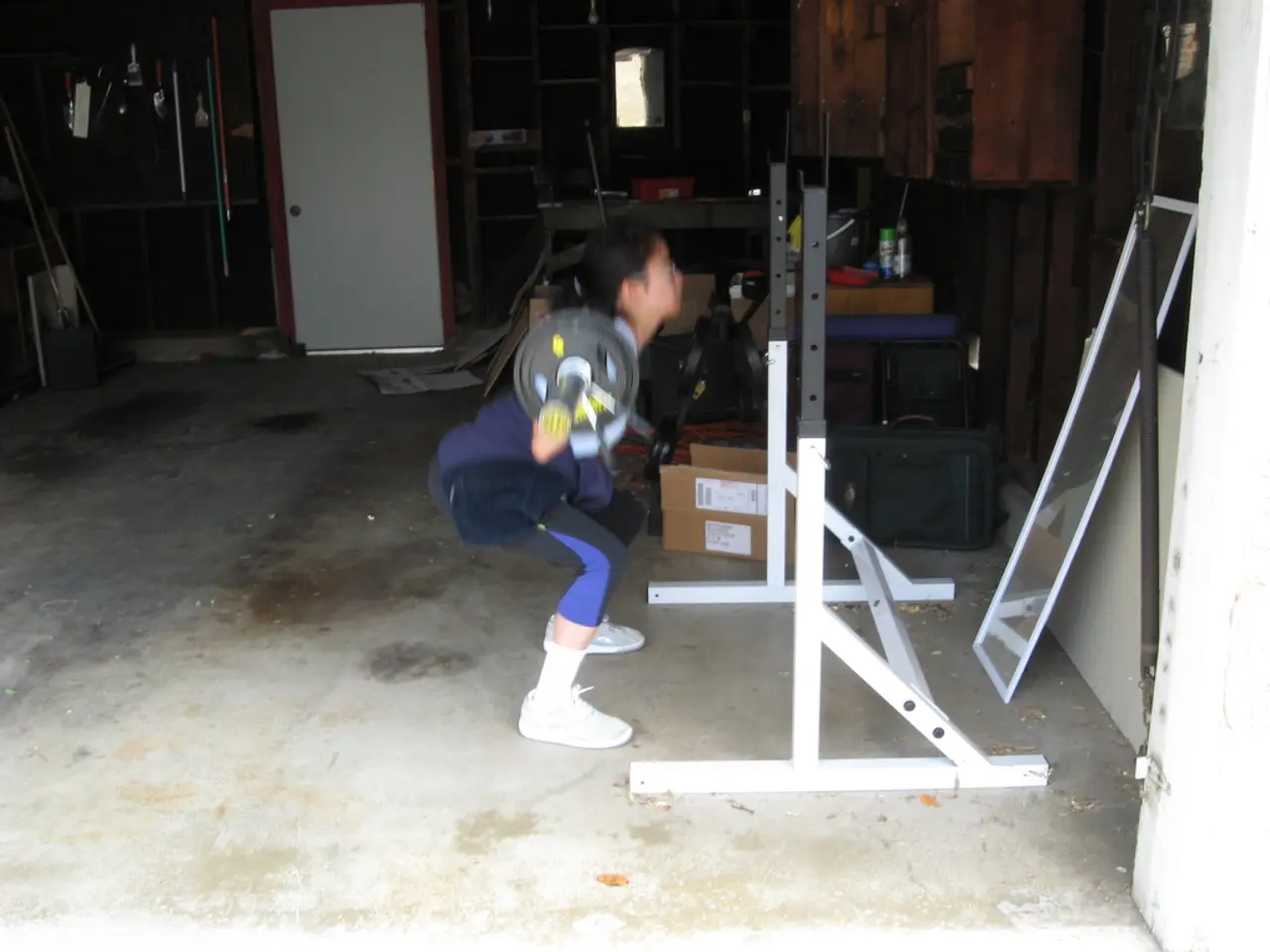Creating a Comprehensive Exercise Regime for Varied Abilities: A Guide
In today's diverse world, fitness spaces should be inclusive and welcoming to everyone, regardless of age, ability, injury, or experience. Here's a comprehensive guide on how to create an inclusive workout routine that encourages participation and fosters a sense of belonging.
**1. Set Inclusive Goals**
Begin by defining objectives that prioritize wellness, connection, and team spirit over competition. Aim to increase overall well-being, foster team spirit, or encourage movement throughout the day. Inclusive goals should be flexible and accessible, accommodating both physical and mental health needs.
**2. Offer Flexible Formats**
Provide a variety of activity options so individuals can choose what suits them best. This means offering both group and solo activities, as well as indoor and outdoor options. Consider hybrid formats for remote or deskless workers. Ensure exercises can be modified for different mobility levels, such as providing seated alternatives or low-impact options.
**3. Tailor Workouts to Diverse Needs**
Adapt exercises to fit a range of fitness levels and abilities by offering modifications and progressions. Incorporate functional exercises relevant to daily life and set realistic, achievable milestones. Personalized attention, whether in group or one-on-one sessions, helps everyone feel included and supported.
**4. Culturally and Ability-Inclusive Activities**
Incorporate culturally relevant activities, such as traditional dances or region-specific sports, to engage participants from various backgrounds. Include adaptive techniques, like seated exercises or inclusive team sports, to accommodate those with physical disabilities or special needs.
**5. Thoughtful Team and Community Building**
When forming groups, create cross-functional or identity-based teams to encourage connections across departments or shared interests. Allow for solo participation for those who prefer it. Assign wellness champions or team leads to motivate without pressure and foster a supportive environment.
**6. Accessible Scheduling and Resources**
Acknowledge that time constraints and resource limitations can be barriers. Offer shorter, more flexible routines and use simple tracking tools (like paper logs or free apps) to monitor progress. Integrate short movement breaks into the schedule to reduce sedentary behavior without requiring extra equipment or time.
**7. Continuous Feedback and Adaptation**
Regularly seek feedback from participants to understand their needs and preferences. Adjust the routine based on this input to ensure ongoing inclusivity and engagement.
By following these strategies, you can create a workout routine that is welcoming, supportive, and effective for everyone, regardless of ability, background, or fitness level.
Low-impact cardio exercises like walking, cycling, swimming, or seated cardio machines provide a heart-pumping workout without stressing the joints. An inclusive workout routine should offer variety and flexibility. Incorporating mindfulness practices like stretching, yoga, or breathing exercises helps improve flexibility, reduce stress, and build mental clarity for people of all abilities.
To ensure a gym is inclusive for people of all abilities, it should have accessible entrances, adjustable equipment, and clear instructions for modifications. Creating a community atmosphere, whether in person or online, can provide support and encouragement in an inclusive workout routine.
Cooldown exercises help lower the heart rate and prevent injury. Examples include gentle neck and shoulder stretches, deep breathing while seated, and stretching the back and legs while lying on a mat. Seated yoga poses, gentle hamstring stretches, and deep breathing exercises are examples of flexibility work.
An inclusive workout routine can still be challenging, as it involves providing adjustments that allow people to challenge themselves in a way that is safe and suitable for their abilities. Inclusive workout routines break down barriers, encourage participation, and foster a sense of belonging.
Many fitness programs cater to seniors or individuals with disabilities, focusing on improving strength, mobility, and balance through low-impact exercises, modified movements, and personalized instruction. Creating a welcoming environment by educating staff about inclusive fitness practices and offering personalized guidance to members can help make a gym inclusive.
Exercises should be adaptable for people using wheelchairs, dealing with chronic conditions, or learning the basics of body movement. Maintaining motivation in an inclusive workout routine can be achieved by setting achievable goals, tracking progress, and celebrating every improvement, no matter how small.
Anna initially found the gym overwhelming due to a lack of adaptable exercises and a judgment-free environment. Offering varying levels of difficulty in workout classes allows beginners, intermediates, and advanced individuals to participate. By following this guide, you can help make fitness spaces more inclusive and accessible for everyone.
- Embrace a goal-oriented approach that values overall well-being, camaraderie, and personal growth, rather than fostering competition.
- Offer a diverse range of exercises, including group, solo, indoor, outdoor, remote, and hybrid formats, to accommodate varying preferences and mobility levels.
- Customize workouts to cater to different fitness levels, incorporating modifications and progressive challenges for optimal accessibility.
- Integrate culturally relevant activities and adaptive exercises to engage individuals from various backgrounds and physical abilities.
- Establish cross-functional or identity-based teams to encourage collaborative spirit, while also respecting those who prefer individual pursuits.
- Ensure workouts are adaptable by providing shorter, flexible routines, simple tracking tools, and movement breaks throughout the day, without requiring extra resources or equipment.
- Cultivate a nurturing environment through active feedback and continuous adaptation, ensuring the routine remains inclusive and engaging for all participants.
- Incorporate low-impact cardio exercises like walking, cycling, swimming, or seated cardio machines to deliver heart-pumping workouts while mitigating joint stress.
- Complement cardio exercises with mindfulness practices such as stretching, yoga, or breathing exercises to foster flexibility, reduce stress, and cultivate mental clarity for people of all abilities.
- In an inclusive gym, strive for accessibility by providing appropriate equipment, clear instructions for modifications, and an educational environment for staff to ensure they can support members with diverse abilities and fitness levels effectively.




